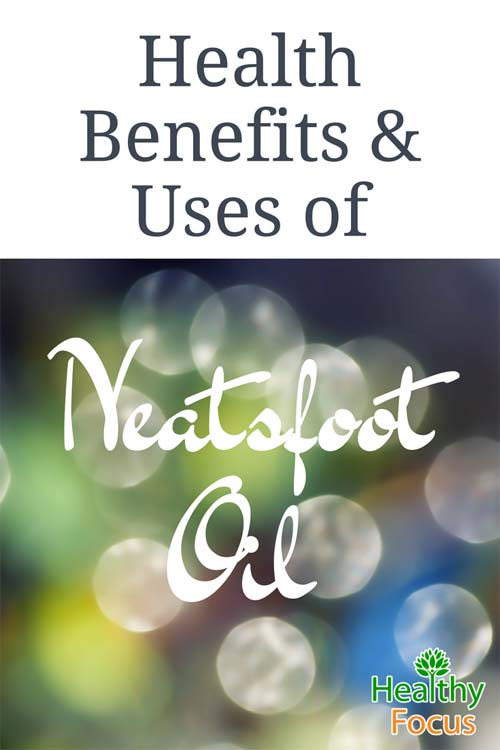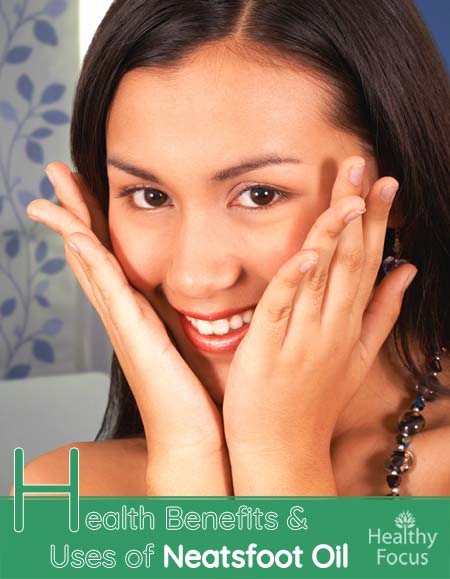Last Updated on June 23, 2018 by Marc Seward
As times change and we start to learn more and more about our bodies and the way they function, the way we treat our bodies also changes. We evolve at the same pace as our knowledge, and that knowledge is constantly growing.
With that said, sometimes the best way to learn is to take another look at the practices once used in ancient times.
By looking at the ways our ancestors lived, we can improve our current practices to match a more natural and healthy lifestyle that fits with the new knowledge we have gained.
There are many natural substances that have been used for centuries and are coming back with a newfound popularity; although, some of those substances have been adapted to fit more modern needs.
What is Neatsfoot Oil?
If you were to look at the history of neatsfoot oil, you might be a little turned off from its use. Thankfully, the oil has come a long way since its traditional and ancient usage.
The neatsfoot oil we use today is made from lard (and may sometimes contain small amounts of cattle bones), and can be classified as one of two types.
“Prime” neatsfoot oil contains many additives derived from petroleum-based products, while “pure” neatsfoot oil is made only from lard, and more closely represents the original version of the oil used in ancient times.
Looking back at ancient history, neatsfoot oil was produced from the shin bones and feet of cattle (not the hooves), which is where the name comes from (“neat”, a word used for cattle at the time).
The oil was and still is, a yellowish color with a thick consistency that can be compared to mink oil. The traditional use of neatsfoot oil was to polish leather, however, it also provided many significant health benefits, as well.
Many sources of neatsfoot oil today are adulterated with vegetable oils, so be careful when purchasing this oil on the modern market. You might commonly find it mixed with things such as lanolin, glycerin, petroleum-based products, and animal-based products.
For the best health and skin benefits, make sure you only purchase pure neatsfoot oil. The pure version of this oil is a powerful emollient and insulator, which makes it great for moisturizing skin, as well as protection from dryness and extreme temperatures.
Neatsfoot oil is rich in essential fats and fat-soluble antioxidants. These nutrients are most beneficial for helping protect the fat molecules, which can be found in a layer under the skin.
Because the oil is made from lard, it is often refined to keep it from solidifying at room temperature or colder temperatures. In light of this, try to avoid purchasing refined oils, as their health benefits are greatly decreased and far less potent.
Pure neatsfoot oil is unrefined and has a slightly greasier and thicker consistency than refined neatsfoot oil.
The nutrient composition of neatsfoot oil made from lard, is most similar to peanut oil.
Neatsfoot oil, much like peanut oil, is rich in arachidic acid, a healthy saturated fat. Notwithstanding that, neatsfoot oil contains higher concentrations of other nutrients, micro-nutrients, and antioxidants.
Research indicates that a diet rich in lard will increase thermogenesis, which is an increase in heat production from inside the body.
Health Benefits of Using Neatsfoot Oil
As previously mentioned, neatsfoot is a powerful emollient and insulator. When choosing the best neatsfoot oil to use for these benefits, it’s best to choose pure neatsfoot oil, made completely from lard or cattle bones, as this is best for topical applications to the skin.
Oils derived from animal-based ingredients have been used throughout history for their healing properties. While they aren’t used as much anymore, their benefits remain the same.
A Great Moisturizer
The oil’s primary and most significant health benefit is its ability to relieve and moisturize dry skin, which is why it is considered as such a powerful emollient.
As neatsfoot is an animal-derived oil, its emollient properties provided by healthy fats allow for excellent moisturization and healing of dry or cracked skin. However, to get the most from these benefits, make sure the neatsfoot oil you buy is pure, and not filled with filler ingredients.
Neatsfoot oil is great for problem areas, such as your feet and elbows, due to its viscosity. Make sure you rub it in well and allow it to dry thoroughly before dressing.
Neatsfoot also has the unique ability to act as an insulator for the skin. Exposure to extreme temperatures on either end of the spectrum can do a whole lot of damage to your skin, especially during the extreme cold of a harsh winter.
When exposed to extremely cold temperatures, the skin becomes numb and blood flow is reduced, increasing the risk of damage to those areas of the body. By applying neatsfoot oil to all areas of exposed skin, you can protect yourself from the damaging cold, even if you’re already wearing warm clothes.
Neatsfoot oil protects the epidermis, which is the outermost layer of skin, from direct contact with extremely cold air. The insulation provided by neatsfoot oil could add as much as, a few degrees of protection to human skin.
While this health benefit is useful to anyone, it is especially useful to older people, because the natural layer of insulation made of fat in their skin wears out and gets thinner, as they age. When this fat layer is worn down, the organs of the body are exposed to the cold, which can cause many serious health issues.
Neatsfoot Oil Comedogenic Rating
A comedogenic rating is a score given to different natural substances to help consumers determine which products are best for their given skin type and tendencies. This score is given on a scale ranging from zero to five, with the lowest numbers representing substances most unlikely to cause allergic reactions, regardless of skin sensitivity.
These lower-rated substances are called non-comedogenic, and should not clog your pores, cause irritation, or cause skin conditions, such as acne, to worsen.
On that basis, these ratings are only given as advice, since many people may still experience reactions that are contrary to what the rating might suggest; a person with sensitive skin might do well with a substance rating of five, just as a person without sensitive skin might react poorly to a non-comedogenic substance.
Unfortunately, neatsfoot oil has not been given a comedogenic rating yet. Along with that, we can only guess what its rating might be, based on the ratings given to oils similar in composition or consistency.
Mink oil, which is similar in consistency, was given a three on the comedogenic scale, which means that it’s likely to irritate many people’s skin. Peanut oil, which is similar in nutrient composition, was given a comedogenic rating of two, which means it is less likely than mink oil, to produce an allergic reaction in people with sensitive skin. Based on those ratings, we can guess that neatsfoot oil might be given a rating of three on the comedogenic scale.
Side Effects and Advice for Using Neatsfoot Oil
Depending on your skin type, neatsfoot oil may or may not be appropriate for you to use. Because of its thick and greasy consistency. People with naturally oily skin may not benefit much from the use of this oil. In general, if you are prone to acne, breakouts, or sensitive skin, there is a chance that neatsfoot oil will cause your skin to have an allergic reaction after using the oil.
Although the oil has generally been considered safe for use without side effects, some people may still experience reactions that are less than desirable. For example, using neatsfoot oil might cause irritation or redness of the skin, especially if you are prone to sensitive skin.
Some studies have also shown that oils made from lard could aggravate and increase inflammation, which may have been caused by obesity.
As you should do before adding any oil to your daily skincare routine, always speak with your doctor first to see if neatsfoot oil is right for you. You should also do a patch test on a small area of skin to see if you have an allergic reaction to the oil. If that area of skin still looks normal, without redness or irritation after 48 hours, it is likely the rest of your skin will react well to applications of the oil.
If you experience any allergic reaction, at any time after applying neatsfoot oil to your skin, you should stop using the oil immediately and speak with your doctor.
You should also speak with your doctor or simply avoid using this oil if you are pregnant or are trying to become pregnant. Overall, neatsfoot oil can provide many significant benefits for your skin, as long as it is applied properly and purchased from a reliable company that only produces high-quality oils.
Neatsfoot oil is a great product to keep around the house, you can use it on your skin and your leather shoes to soften and shine.

Leave a Reply
You must be logged in to post a comment.